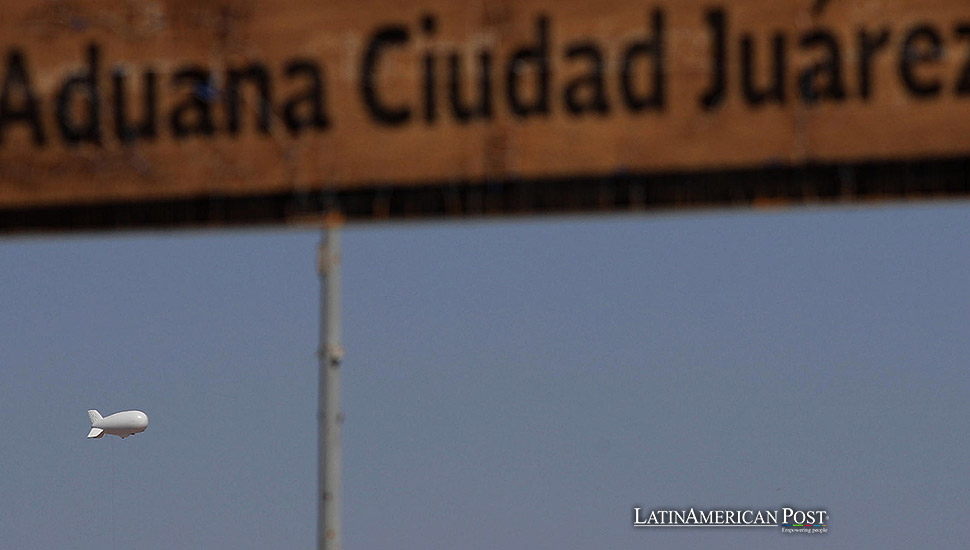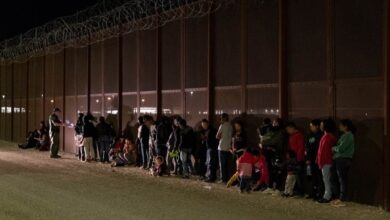High-Tech Balloon Surveillance: Saving Lives Along the U.S.-Mexico Border

In response to the rising number of migrant deaths along the U.S.-Mexico border, authorities have deployed a high-tech balloon equipped with sensors and high-resolution cameras to monitor vast, dangerous regions between Ciudad Juárez and New Mexico. This technology aims to save lives by detecting migrants in peril.
The Technology Behind the Balloon
As migrant deaths continue to climb along the U.S.-Mexico border, technology has become an essential tool in helping border patrol agents monitor dangerous, remote regions. One of the most advanced technologies being deployed in this effort is a giant balloon equipped with state-of-the-art sensors and high-resolution cameras. The balloon, deployed by U.S. authorities, can hover over inaccessible areas, providing a birds-eye view of vast stretches of desert and rugged terrain.
The balloon is fitted with long-range thermal imaging and infrared cameras, allowing it to identify heat signatures, even in pitch-black conditions or when visibility is compromised by dust storms or extreme heat. These sensors are particularly effective in locating groups of migrants attempting to cross the border in remote areas where environmental hazards seriously threaten their survival.
While the primary goal of this balloon technology is to aid border security by detecting unauthorized crossings, it has also become a vital tool in life-saving efforts. By providing real-time footage to border patrol agents on the ground, the balloon allows for early identification of migrants in distress. Whether suffering from dehydration, heat stroke, or exhaustion, the ability to track their movements from the sky offers a critical advantage in launching timely rescue operations.
According to border officials, the balloon can remain airborne for extended periods, covering hundreds of square miles that would otherwise be impossible to monitor effectively. As temperatures soar in the border region, these aerial surveillance devices become even more valuable, helping agents spot individuals who may be disoriented, injured, or at risk of death in the unforgiving desert.
Rising Death Toll and the Need for Intervention
In 2023, the U.S. Border Patrol’s El Paso sector, which includes parts of western Texas and New Mexico, reported 151 migrant deaths. These fatalities were mainly attributed to extreme environmental factors, including dehydration, exhaustion, and drowning in the dangerous waters of the Rio Grande. The 2024 statistics are even more alarming—by August, 174 deaths had already been recorded, surpassing the previous year’s total in just eight months.
Local authorities and humanitarian organizations in Mexico are quick to point out that these tragedies are often the result of harsh U.S. immigration policies, which push migrants to attempt crossings through more dangerous routes. As border security has tightened, migrants have increasingly been forced into remote and dangerous regions where temperatures regularly exceed 100 degrees Fahrenheit. The lack of access to water and the extreme heat create a deadly combination, particularly for those unfamiliar with the harsh conditions of the desert.
Moisés Méndez, a Guatemalan migrant who recently made the perilous journey, spoke to EFE about the overwhelming danger that migrants face in these regions. “The biggest threat we face is the unbearable heat and lack of water. Many people have died from exhaustion or dehydration,” Méndez explained. “This balloon is a great help because of all the suffering people endure in the desert.”
Migrants like Méndez recount stories of companions left behind, succumbing to the heat or fatigue, with their families often unaware of their fate. It is precisely these tragic stories that underline the importance of balloon surveillance technology. The U.S. government hopes this high-tech approach will allow border patrol agents to locate migrants before it is too late.
The hope is that by identifying migrants early and coordinating rescue efforts, the number of fatalities along the border can be reduced. The technology also allows for the timely dispatch of medical teams to provide immediate aid to those suffering from severe dehydration or heatstroke—conditions that, if untreated, can quickly turn fatal.
The Role of Technology in Rescues
Balloon surveillance is part of a broader effort by U.S. authorities to enhance security and humanitarian assistance at the border. Pastor Juan Fierro García, the director of the El Buen Samaritano migrant shelter in Ciudad Juárez, emphasized the life-saving potential of this technology. “Many have been left behind, injured, or even dead. But now, with this balloon, it can spot people, communicate their location to teams on the ground, and mobilize help quickly,” Fierro said in an interview with EFE.
The balloon’s cameras and sensors work with other advanced technologies, such as drones and ground-based sensors, to create a comprehensive surveillance system along the border. This system allows agents to detect and track movements across multiple terrains—deserts, mountains, and river crossings—where traditional monitoring methods, like patrol vehicles or human-crewed aircraft, would be less effective.
In regions where the terrain is too rough for vehicles, agents can use the balloon’s data to deploy helicopters or off-road vehicles to reach migrants needing rescue. In cases where it is too dangerous for ground teams to operate, agents can remotely dispatch emergency water or supplies via drones to stranded individuals, buying them time until they can be safely extracted.
Beyond detecting illegal crossings and coordinating rescues, balloon technology also serves as a deterrent. Migrants and smugglers, aware of the increased surveillance capabilities, may be less likely to attempt dangerous crossings, knowing that they are being watched from above. While primarily focused on monitoring, this technological advance has become a critical component in reducing human suffering along the border.
However, it is essential to note that the balloon technology is not a cure-all. While it offers enhanced surveillance and faster response times, it cannot prevent the underlying issues driving migration or the dangerous conditions migrants face. The balloon may spot someone in distress, but the vastness of the desert means that even with early detection, it can sometimes be too late to save a life.
Migrant Deaths on the World’s Most Perilous Route
The balloon surveillance initiative is critical as the U.S.-Mexico border has been declared the world’s most dangerous land migration route. In 2023, the International Organization for Migration (IOM) reported that over 686 migrants had died or disappeared along this route in 2022 alone. This staggering death toll highlights the urgent need for enhanced safety measures and humanitarian intervention along the border.
The conditions that migrants face are brutal, with temperatures often soaring above 110 degrees Fahrenheit in the summer months. Migrants who attempt to cross through the desert are at constant risk of dehydration, heat exhaustion, and hyperthermia. Those who opt to cross the Rio Grande face equally treacherous conditions, as the fast-moving waters and unpredictable currents have claimed countless lives. Smugglers, often referred to as coyotes, routinely abandon migrants in life-threatening situations, leaving them to fend for themselves in the harsh wilderness.
For migrants from countries like Guatemala, Honduras, and El Salvador, the journey through Mexico and into the United States is fraught with danger at every turn. Tren de Aragua, a notorious Venezuelan gang, has capitalized on the desperation of migrants, running extortion rackets, drug trafficking, and human smuggling operations across several Latin American countries, including Colombia, Ecuador, and Chile. Migrants who fall victim to these criminal networks often face threats of violence or kidnapping, further compounding the dangers they encounter.
The balloon technology, while focused on the border, offers a glimpse into how advanced surveillance and early detection can mitigate some of the dangers migrants face. However, the root causes of migration—poverty, violence, and political instability in Latin America—continue to drive thousands of people to attempt these dangerous journeys, often with fatal consequences.
A Technological Lifeline in a Humanitarian Crisis
As the death toll continues to rise along the U.S.-Mexico border, the deployment of high-tech balloon surveillance represents a significant step forward in preventing further tragedies. The ability to monitor vast, remote areas of the desert and identify migrants in distress offers hope for more timely interventions and potentially life-saving rescues.
Yet, as advanced as this technology is, it cannot solve the underlying issues that drive migration. The desperation that forces people to cross dangerous deserts or treacherous rivers remains, as do the criminal networks preying on vulnerable individuals along the way. The balloon is an essential tool, but it is not a solution to the humanitarian crisis unfolding at the border.
Also read: Mexico’s Green Hydrogen Ambitions and Latin America’s Path to Decarbonization
As long as migrants continue to seek safety and opportunity in the U.S., the border will remain a dangerous place. However, with technology like balloon surveillance and other innovations, there is hope that fewer lives will be lost. Ultimately, this technology may not be able to stop the tide of migration, but it can offer a critical lifeline to those most in need of help.




